Morbid Monday: The Royal Rotting Room
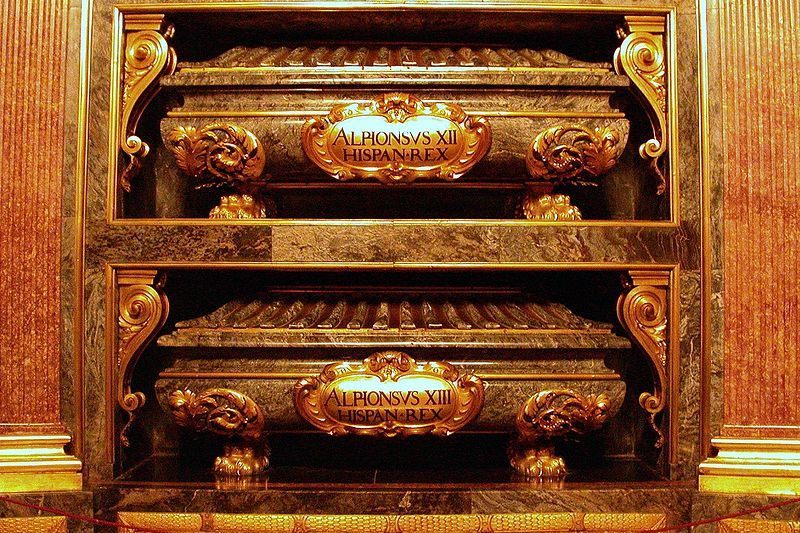 Panteón Real de El Escorial (photograph by Bocachete/Wikimedia)
Panteón Real de El Escorial (photograph by Bocachete/Wikimedia)
Every royal family has its ostentatious burial chamber, from Basilique Saint-Denis in France to the Hapsburg Imperial Crypt in Austria. In Spain, 26 gold and marble tombs are installed in San Lorenzo del Escorial, containing every monarch since the 16th century’s Charles V. However, before these regal remains are allowed to enter their gilded sepulchers, they must first be reduced to bones in the “Rotting Room.”
Rotting Room is the unglamorous translation of “El Pudridero.” When Felipe II designed the gargantuan El Escorial royal complex in the 16th century northwest of Madrid, he practically made it a shrine of death. Containing a Hall of Battles full of detailed war murals, a sort of wedding cake-shaped tomb encasing royal babies, and even arranged with its granite architecture like the gridiron on which San Lorenzo was roasted alive, the palace is one big memento mori. Felipe II also designed it as his own tomb.
 Diagram of the Royal Pantheon (by SalomonSegundo/Wikimedia)
Diagram of the Royal Pantheon (by SalomonSegundo/Wikimedia)
The Royal Pantheon (Panteón Real de El Escorial) is all ornate marble with its stacks of identical tombs and their gleaming nameplates. But their cohesive design also means it’s a one-size-fits-all situation, so before this beautiful grave, each monarch must take a trip to the Rotting Room. Located behind the Pantheon walls, accessible only to monks at the Escorial monastery, this is a secretive room accessed by a private passage (here’s the only known photo inside). It’s here where for at least 20 years mortal kings — and queens who birthed kings — decompose beneath lime until they are completely bone.
Centuries later, the Rotting Room is still in use. The parents of King Juan Carlos I, who just abdicated his throne to his son Felipe VI last year, are reportedly still inside the rotting room, awaiting their transfer. However, after them the Pantheon will be full, so whether Juan Carlos will be eternally among the glimmering gold tombs of the past Spanish monarchs remains a question.
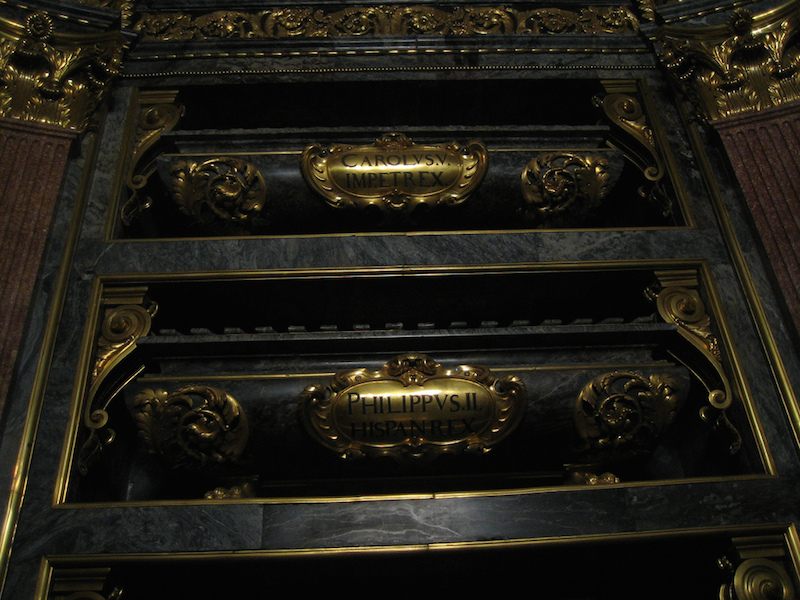
Tombs of Carlos and Felipe in the Pantheon (photograph by Gabriel Rodríguez/Flickr)
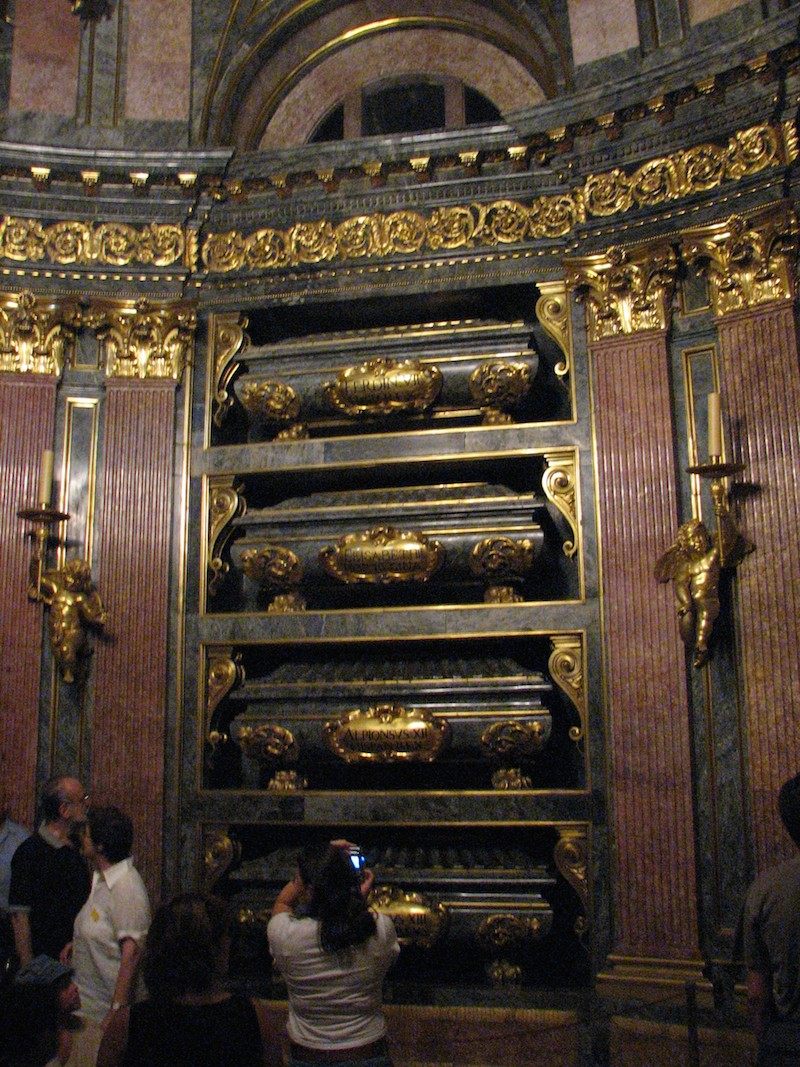
The Royal Pantheon (photograph by Alberto/Flickr)
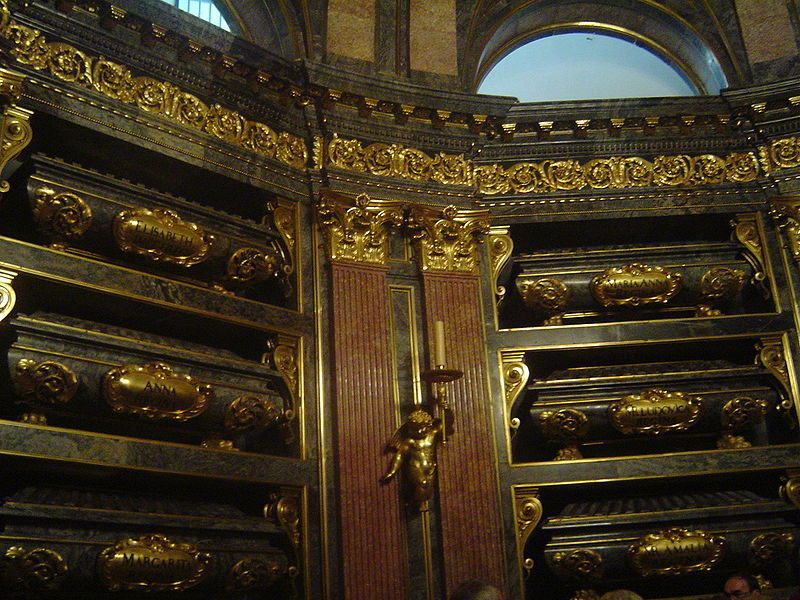
photograph by Bocachete/Wikimedia
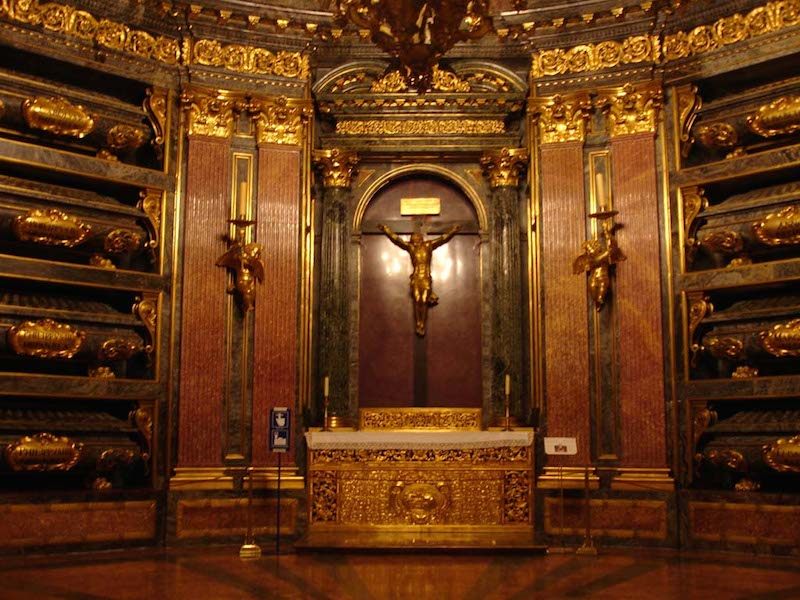
photograph by Rogelio/Flickr
 Stairs down to the Pantheon (photograph by losmininos/Flickr)
Stairs down to the Pantheon (photograph by losmininos/Flickr)
Morbid Mondays highlight macabre stories from around the world and through time, indulging in our morbid curiosity for stories from history’s darkest corners. Read more Morbid Mondays>







Follow us on Twitter to get the latest on the world's hidden wonders.
Like us on Facebook to get the latest on the world's hidden wonders.
Follow us on Twitter Like us on Facebook